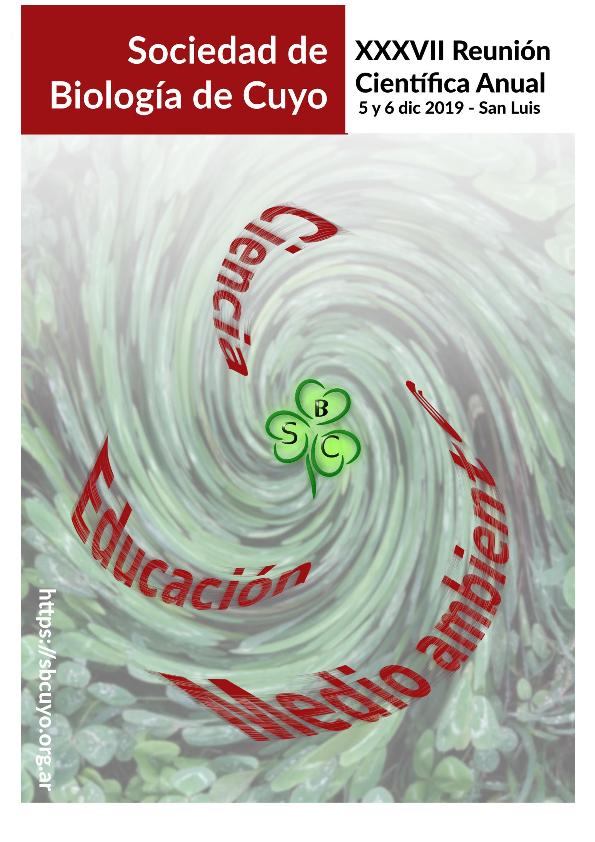Evento
Seasonal study of the expression of the s-100 protein in pituitary pars nervosa of viscacha (Lagostomus maximus maximus)
Mariqueo, Betsabé L.; Diaz Guevara, María Clara; Rosales, Gabriel; Filippa, Veronica Palmira ; Perez, Edith; Mohamed, Fabian Heber
; Perez, Edith; Mohamed, Fabian Heber
 ; Perez, Edith; Mohamed, Fabian Heber
; Perez, Edith; Mohamed, Fabian Heber
Tipo del evento:
Reunión
Nombre del evento:
XXXVII Reunión Científica Anual de la Sociedad de Biología de Cuyo: Educación, Salud y ambiente: Los nuevos desafíos en las Ciencias Biológicas
Fecha del evento:
05/12/2019
Institución Organizadora:
Sociedad de Biología de Cuyo;
Título del Libro:
Libro de Resúmenes XXXVII Reunión Científica Anual Sociedad de Biología de Cuyo
Título de la revista:
Biocell
Editorial:
Sociedad de Biología de Cuyo
Idioma:
Inglés
Clasificación temática:
Resumen
The pars nervosa (PN) of the neurohypophysis is mainly constituted by pituicytes and other neuroglial cells such as microglial cells, astrocytes and oligodendrocytes, endothelial cells of blood vessels and amylinic axons. The PN pituicytes express the S-100 protein that has a regulatory role within the cell and on different target cells. The aim of this work was to study the seasonal expression of S100 protein in pituitary PN of adult male viscachas (Lagostomus maximus maximus). The animals were captured in their habitat during the most representative months of their annual reproductive cycle. This cycle has three periods: reproductive (RepP), gonadal regression (RegP), and gonadal recovery (RecP). Four pituitary glands of each period were removed and processed for optical microscopy. The S-100 protein was used as markers of pituicytes and their expression was detected by immunohistochemistry. The primary antibody used was the rabbit polyclonal anti-S-100 protein. Immunohistochemical staining was performed using a streptavidinbiotin-peroxidase complex method with the 3, 3’- diaminobenzidine tetrahydrochloride (DAB) as chromogen. A morphometric study was performed and the percentage of immunopositive area for S-100 (% IA-S-100) was measured. The results obtained from these periods were statistically analyzed. Most of the pituicytes presented a cytoplamic immunostaining pattern. However, some of them also exhibited nuclear staining. The nuclei were round, oval and irregular in shape, with varying density of chromatin and an evident nucleolus. Numerous immunostained cytoplasmic processes in contact with blood vessels were observed. The % IA-S-100 varied throughout the annual reproductive cycle. The % IA during the RepP (13.09 ± 1.49) and RegP (9.77 ± 1.56) were significantly lower than in the RecP (25.61 ± 2.36; P < 0.001). These results demonstrated that the highest expression of S-100 protein was in the RecP. This period agrees with the increase of seasonal rainfall pattern during spring, so the viscachas have greater water availability in the environment. It is likely that the pituicytes participate in the seasonal regulation of the neurohormonal secretion through the expression of the S-100 protein. This protein is associated with functions such as modulation of enzymatic activity, stimulation of adenylate cyclase, maintenance of cell shape and mobility. However, further research is needed to elucidate the relationship between S-100 expression and the neurohormonal PN secretion of Lagostomus.
Palabras clave:
LAGOSTOMUS
,
PITUITARY
,
S-100 PROTEIN
,
SEASONAL
Archivos asociados
Licencia
Identificadores
Colecciones
Eventos(CCT - SAN LUIS)
Eventos de CTRO.CIENTIFICO TECNOL.CONICET - SAN LUIS
Eventos de CTRO.CIENTIFICO TECNOL.CONICET - SAN LUIS
Citación
Seasonal study of the expression of the s-100 protein in pituitary pars nervosa of viscacha (Lagostomus maximus maximus); XXXVII Reunión Científica Anual de la Sociedad de Biología de Cuyo: Educación, Salud y ambiente: Los nuevos desafíos en las Ciencias Biológicas; San Luis; Argentina; 2019; 61-61
Compartir



